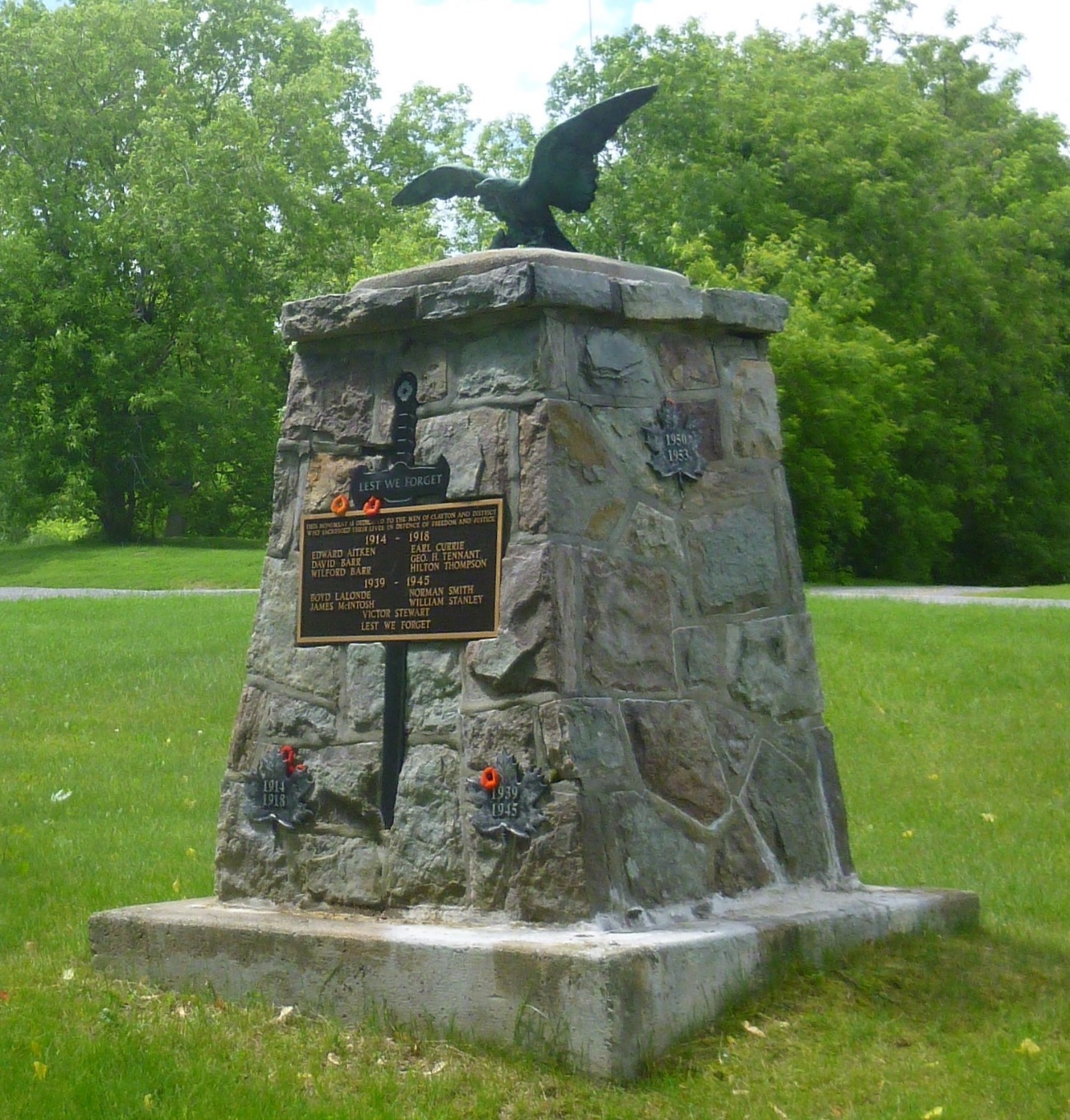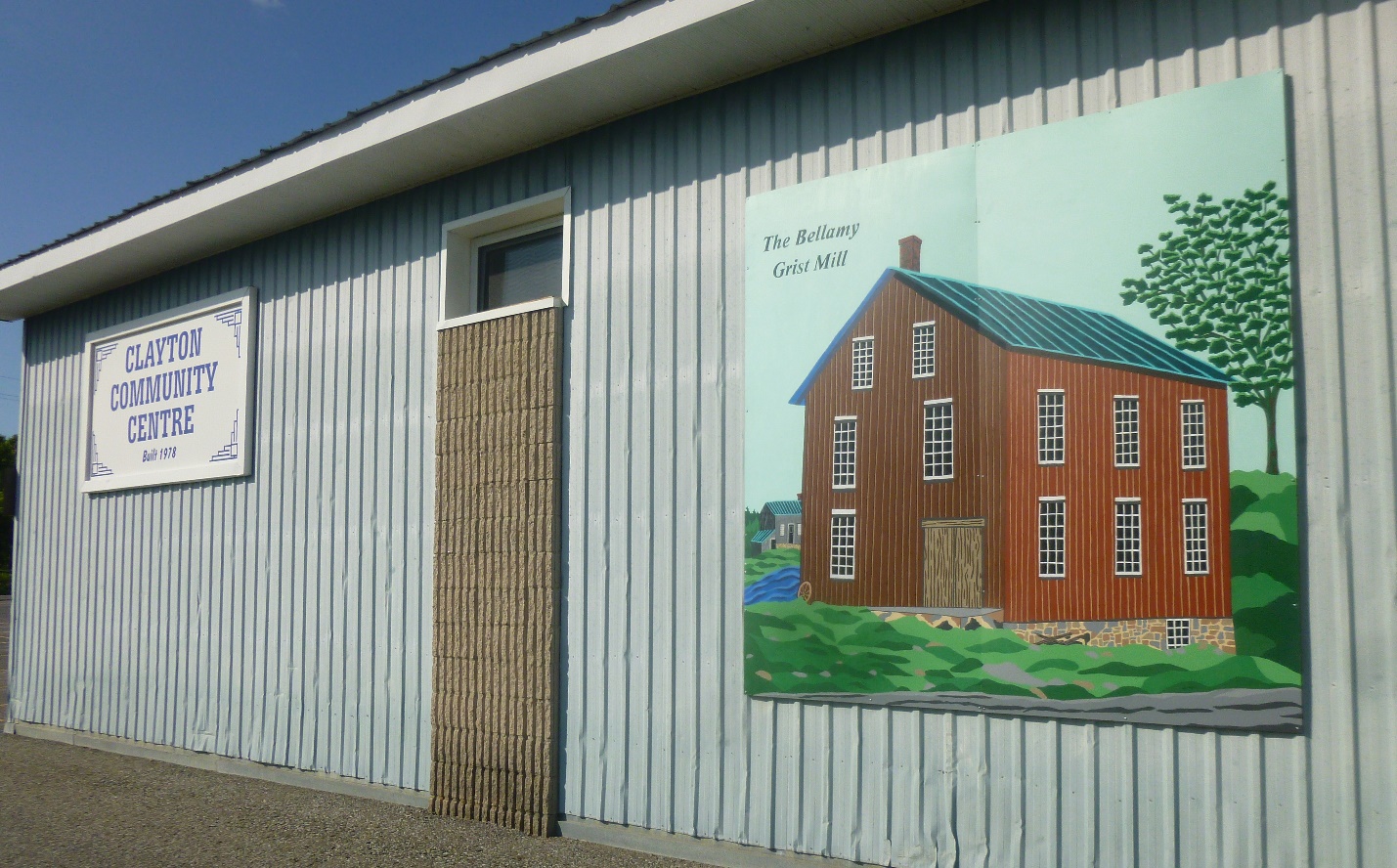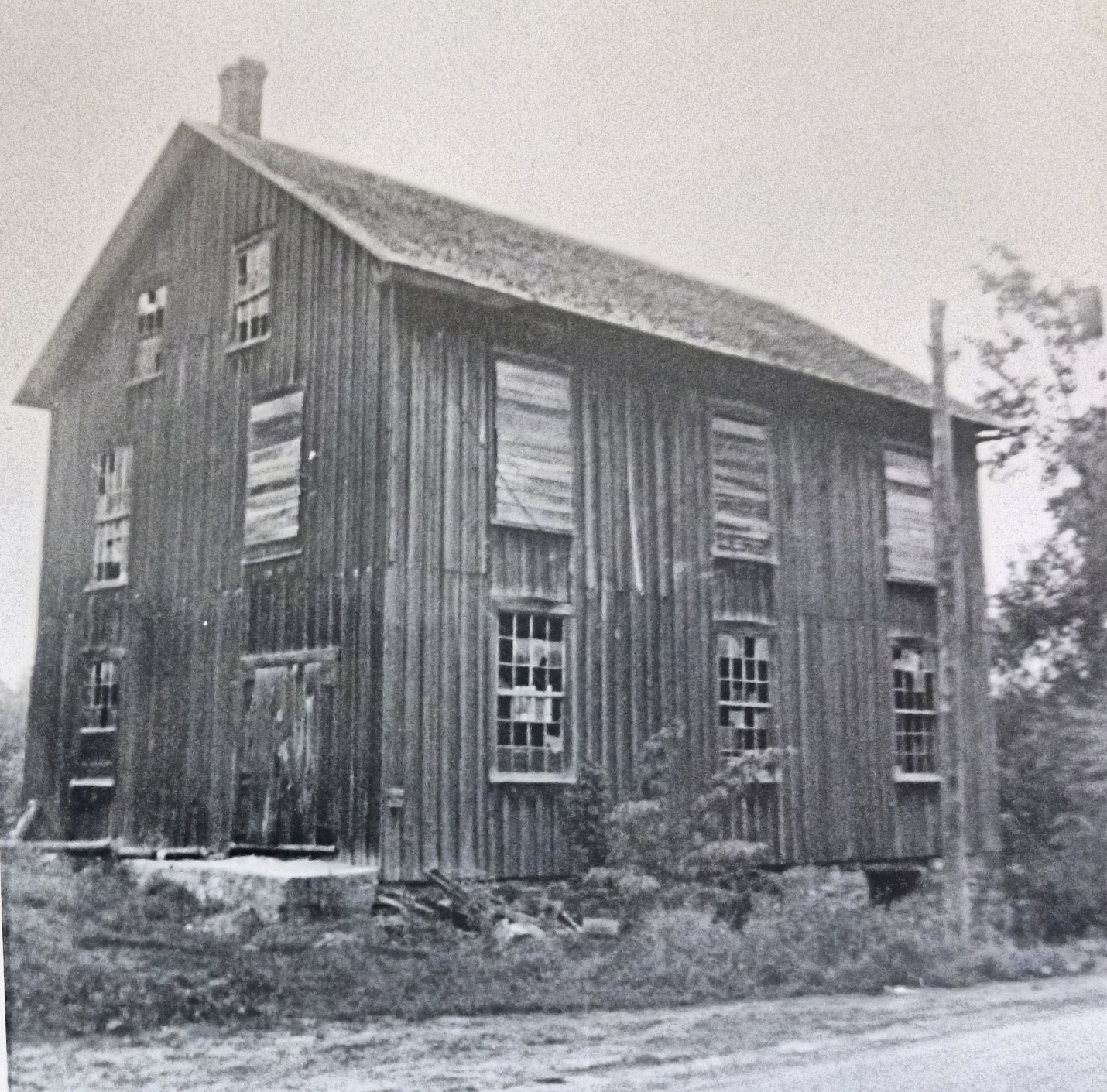Clayton Historic Features
The Clayton Cenotaph
The Clayton Cenotaph was built in 1997/1998 to honour the fallen heroes from the Clayton area. It was built with the support of the Almonte Legion and the seniors of Linn Bower in Clayton.
A legion member, Comrade Lt Edmonds designed the monument and Joey Edmonds built it. Funding for the cenotaph and brass plaque was provided by the Almonte Legion and local community members.
It was dedicated on November 11th, 1998, and a Remembrance Day Parade and ceremony is held annually.

LEST WE FORGET
1914 – 1918
Edward Aitken David Barr Wilford Barr
Earl Currie Geo H Tennant Hilton Thompson
1939 – 1945
Boyd Lalonde James McIntosh Norman Smith
William Stanley Victor Stewart
The Clayton Grist Mill Historical Mural
This mural is mounted on the Clayton Community Centre. It was painted by the Almonte and Area Artists’ Association in 2018 and donated to the hall.

The first grist mill which belonged to the Bellamy family was a stone building. They sold the property to the Drummond family in 1860 who built this structure in 1864 because the stone structure had become derelict. It is likely that it was built on the original foundation.
The building of the grist mill was a great benefit to early settlers. Prior to the mill, they had to grind their flour by pounding it out in a hollowed out tree stump or rock using a wooden pestle. Larger amounts of wheat had to be carried to Perth. The mill used two huge millstones that were capable of grinding the wheat at a rate of over a bushel an hour. The mill ran day and night thanks to the Clayton dam that held back enough water.
The sacks of grain were carried to the top floor of the mill where they were then poured through a chute that fed into a hopper into the centre of the top millstone. The bottom millstone was fixed and the top millstone turned. There were grooves in the stones that took the husks off of the grain and ground it into flour. The flour then exited via the grooves into a chute where it was bagged as flour on the bottom floor. The Clayton mill produced both flour and canaille for porridge and whatever was left was used as food for livestock.
When the Mississippi Lumber Company bought the mill in 1947, it was turned into a planning mill. In 1968, when the province bought the mill, it was torn down. The hasher plates were mounted along with the turbine from the sawmill in the Clayton-Taylor Lake park where the mill once stood. The millstones were placed at the Mill of Kintail.
Picture of the grist mill in 1955:

The Johnnie Erskine Historical Mural
This mural is located on the Feed Shed across from the Clayton General Store (painted and donated by Laurel Cook). John (Johnnie) L Erskine and his wife Essie, owned and operated the Clayton General Store from 1932 to 1946. His parents, John A and Marion Erskine, had owned and operated the store from 1906 to 1932 during which time they had done considerable work on the building including bricking the exterior in 1916.
(Photo is temporarily unavailable)
Johnnie quit school when he was fourteen and wagoned for his father until he married his wife Esther Rath in 1918. He got a farm on Concession 2 which he worked for three years until he purchased a farm on Concession 12 which he worked for 11 years. When his father passed away and Johnnie moved back to Clayton to take over the store, the Depression was well underway. Realizing that everyone in the country had a wood lot and wood was required in Almonte and the village, he started a wood business.
Farmers would hire men to cut cordwood and pile it where it could be reached by truck. The farmer would give the men a slip of paper stating the amount of wood they had cut. They would take the slip to Johnnie who would pay them for the wood. The farmer would receive $2 for each cord and they in turn would pay the men $1 for each cord that had been cut. For hardwood, Johnnie would pay $3 a cord of which the men would receive $2 a cord for cutting. In 1932, Johnnie, in turn, sold the wood to the town and the people of the town for $6.50 a cord for hardwood which rose to $8.50 a cord by 1939. There were others in the Clayton area who sold firewood, but Johnnie pretty well had the market sewn up.
Johnnie Erskine sold the store in 1946 when he went to Almonte and bought Almonte Cold Storage and subsequently the IGA. However, he left a lasting impression on the Clayton community.
The mural depicts Johnnie Erskine in his later years “looking back” at the store that he owned and operated for 14 years.












